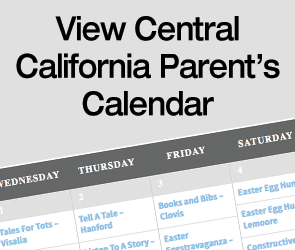Back-to-School Basics: 5 Things to Know at Every Stage

By Malia Jacobson
When kids begin school, they’re not the only ones learning—parents have homework, too. At the outset of a fresh school year, particularly when kids are leveling up to elementary, middle, or high school, parents must prep their child for a fresh academic year while simultaneously absorbing piles of new information themselves. Here’s what you need to know to start strong at every stage.
Five things to know about elementary school
1. Get involved
Elementary school is an excellent time to plug in to parent involvement opportunities. These days, more parents are pitching in: Per nonprofit research center Child Trends, parent involvement in school activities and events increased ten percent between 1999 and 2012. Pencil the school’s first parent-teacher organization on your calendar and try to attend—you’ll learn about events and activities that can enhance the back-to-school experience for your child.
2. Undercover volunteer
When parents volunteer at school, students and teachers benefit. Parental involvement in school is linked to better grades, fewer behavior problems, and increased teacher job satisfaction. But you don’t need an open calendar to help at school—working parents, those with small children at home, and those can’t spare an entire day for a school field trip can still contribute. Contact your child’s teacher and ask how you can help. Parents can help sort box tops, organize student folders, or prep supplies for classroom art projects from home on the weekends. And don’t forget about “specialist” instructors: Music teachers, PE teachers, and librarians may have jobs for volunteers, and field fewer offers to help.
3. Work from home
For brand-new elementary students—think kindergarten and first grade—homework loads will likely be light. But it’s a great time to plan ahead for upper elementary grades, when homework begins in earnest. Designate a spot for school papers and a calendar where you and your child can keep track of assignments and due dates. For very young students, basic reading and math facts are things families can practice at home; ask your teacher for a list of “sight words,” or words your child will need to know on sight by the end of kindergarten, and review them weekly with your child.
4. Sleep scene
Don’t let the back-to-school hustle and bustle steal your child’s sleep. Experts say young students are chronically sleep-deprived: Today’s children get an hour less sleep than they did a generation ago, and sleep deprivation can bring on ADHD-like symptoms including inattentiveness, mood swings, and academic difficulty. Students ages five through seven may still need up to 12 hours of sleep per night; kids age eight and up may still require 8-10 hours. If bedtimes have been late during the summer, gradually transition your child back to a school-year sleep routine by waking him up 20 to 30 minutes earlier in the morning, and setting lights-out a bit earlier each evening.
5. Tech talk
Expect students to encounter technology early, even in kindergarten, says Molly Anderson, technology teacher at Cotswold Elementary School in Charlotte, North Carolina. At Anderson’s school, classrooms now have “smart boards”—the digital equivalent of a chalkboard—and students begin learning keyboarding skills in kindergarten. “Today’s students know how to use a touch screen, but parents often don’t realize that students need to be able to operate a desktop computer and a keyboard for school testing.” Older students may have the opportunity to “bring their own technology” to school. These “BYOT” programs enable students to bring their own devices to school to be used for research or special projects. (Cotswold and other schools employ firewalls to block inappropriate internet content on these devices while kids are at school.)
Five things to know about middle school
1. Supply crunch
Parents of middle schoolers can expect to spend big on school supplies: According to a 2015 survey by Huntington Bank, headquartered in Columbus, Ohio, middle school supplies will run parents $941, up 2.5 percent from previous years. School supply costs are edging up because cash-strapped schools are leaning on parents to pick up the supply tab, and supply costs shoot up in middle school, when parents foot the bill for extracurricular activities like band and school sports in addition to springing for basic supplies. To minimize supply costs, scour ad circulars for big-box stores’ annual supply sales, go in with a group of parents and buy bulk supplies, and hit up garage sales, where finds like calculators and backpacks can be snapped up on the cheap.
2. Schedule swap
Middle school marks a significant academic transition—instead of staying in one classroom, most students move from class to class and interact with a number of teachers throughout the day. Prepare students for this transition by purchasing locker-organization supplies—without a classroom “home base,” the locker becomes central to staying organized—and creating a contact list for teacher names, emails, and phone numbers. Attending the school’s back-to-school meet-and-greet gives parents and students the chance to meet teachers face-to-face prior to the first day, which can help ease back-to-school nerves for everyone.
3. Building skills
Academic pressure dials up in middle school, and students bear more responsibly for meeting deadlines and working independently. Students may need some help upgrading their study skills to meet new demands, says Nancy Errichetti, head of school at The Montessori School of Raleigh. “First year middle school students attend a weekly ‘Study Skills’ class that equips students with the tools to be an effective student; how to use a planner efficiently, keep track of important papers, estimate how long an assignment will take, and how to break down large assignments into more manageable pieces,” she says.
4. Adviser advice
Middle school’s myriad of teachers can seem daunting to parents, who may not know where to turn with questions or concerns. Generally, you can start with your student’s adviser or homeroom teacher, an instructor who will be central to his academic team in middle school. Take note of this teacher’s name and contact information as soon as you can, advises Errichetti. “Many middle school students will have an adviser or homeroom teacher who can help foster stronger study skills, monitor overall academic progress, and promote a sense of community.”
5. Strong failings
In middle school, parents should begin allowing students to experience the natural results of their academic and social choices—this builds the autonomy needed for high school and beyond. “We encourage our parents to adopt an autonomy-supportive style of parenting, which allows students to experience the natural consequences of their choices,” says Errichetti. If a student forgets to study for an exam and receives a low grade, encourage self-reflection: Did he or she study as much as possible, understand the material and reach out to the teacher for help? “This way, the student owns the grade, says Errichetti. “And, most importantly, after this self-reflection, the student can actively change how they prepare in the future.”
Five things to know about high school
1. Making the grade
Whether your child breezed through middle school with As and Bs or struggled to score Cs, there’s no disputing the fact that grades hold more significance in high school, where your child’s academic choices can help chart the course for her college future. And the myth that freshman year grades don’t matter is just that—a myth. Expect high school to be more academically rigorous, and pay attention to signs your child is falling behind: Skipping class, failing to make up late work, and complaining that teachers “just don’t like me.” Engaging a tutor early on can head off difficulty later.
2. Teacher talk
Parent-teacher communication shifts in upper grades—expect to hear less from your child’s instructors in general. There’s a good reason for this, says Mark Savage, Ed.D., principal of Heritage High School in Wake Forest, North Carolina. In high school, students expected to communicate directly with teachers, in preparation for college. “There is a larger impetus on student responsibility in self-advocating, and those transitions can be tough,” he says. Parents with questions or concerns should speak up promptly—High school teachers often welcome parent contact and are quick to respond.
3. Step into sports
Whether your child shines on the basketball court or prefers solo athletic pursuits, high school is a great time to lace up those sneakers. Per the National Federation of State High School Associations, nearly eight million American high school students participate in school sports each year; North Carolina ranks 13th in the nation for numbers of student athletes. The most popular school sports by participation level are football, basketball, and track and field, but most schools offer a long list of extracurricular sports, from tennis to water polo to drill team. School sports are linked to better grades and lower rates of teen pregnancy, and can provide a boost to college applications, too.
4. Calendar crunch
Parents of high schoolers often have questions about college application timelines, says Mark Savage, Ed.D., of Heritage High School. “Typically, Student Services hosts individual grade-level nights to go over any unique requirements and timelines. Counselors are the main conduit for questions as to these college application processes,” he says. Freshman and sophomores should concentrate on challenging themselves academically and getting involved in extracurricular activities; juniors should make develop a list of prospective schools, make campus visits, and take SAT/ACT tests. “Fall of senior year is when the application process is really in play,” he says. “Many schools provide college application workshops and help throughout.”
5. Step back
High school is a time when students still need parental guidance and support, as they learn to self-manage their academic, social and personal lives, notes Savage. For parents, this involves knowing when to step in and when to let go—easier said than done. “Knowing when to intervene and when to let-go is an inexact science when your child first comes to high school,” he says. “Even though your child may be asserting more independence, it is still critical for you to know their teachers, come to the school for events and know their friends.”
Central California Parent is the #1 FREE parenting resource for Central Valley families.
Stay connected with Central California Parent throughout the month!
• Like Us on Facebook
• Follow Us on Instagram
• Follow Us on Pinterest
• Follow Us on Twitter
• Subscribe For our Family E-Newsletter
• Read Our Digital Edition
• Enter for our FREE Giveaways





